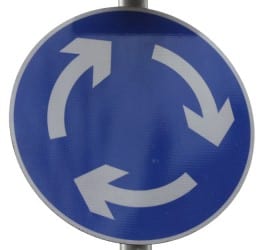How to Deal with Repeat Infringers
 Generally, when you encounter a plagiarist, spammer or other infringer, it only takes a cease and desist letter or a DMCA takedown notice to handle the situation. The infringing work(s) comes down and that’s usually the end of it.
Generally, when you encounter a plagiarist, spammer or other infringer, it only takes a cease and desist letter or a DMCA takedown notice to handle the situation. The infringing work(s) comes down and that’s usually the end of it.
However, some infringers just don’t get the hint. The work goes down and but it doesn’t stay there. Sometimes it reappears on the same server, sometimes on a new one. Sometimes it happens almost instantly, sometimes its weeks or even months later. But no matter the circumstance repeat infringers are extremely frustrating to deal with.
Fortunately, they tend to be very rare and some cases of repeat infringement are actually accidents and mistakes. However, if you do run into a repeat infringer that survives one stake through its heart, it’s time to start devising a plan for putting an end to the case quickly and moving on as fast as possible.
Why People Infringe Repeatedly
Generally, repeat infringers are rare because it isn’t worth the time and effort to go back after someone who has already shut you down once. With so much content on the Web, there’s almost no reason for a plagiarist to pick a prolonged fight with an angry copyright holder, unless they are targeting that content specifically.
Yet, a handful do. Sometimes its because spammers automate their operation so heavily it can be difficult to stop, other times it’s a technical issue or a mistake that causes the work to reappear. However, the more common causes of repeat infringers appears to be ignorance (ignorance of the law or simply thinking that the creator is gone), or simple spite.
The exception to this is in cases of outright piracy, such as file locker and Bittorrent sites. Those sites are targeting specific works, not merely trying to fill pages, and its users will work tirelessly to keep the content they want online, even re-uploading it multiple times. Unfortunately, this is a different scenario that we are going to have to talk about in another article down the road.
That being said, if there’s no reason to believe that your work was targeted initially (IE: It was used for spam sites, plagiarized in a blog or used as marketing copy) yet you are still dealing with a repeat infringer, there are specific actions that you need to take to try and bring a quick end to the ordeal.
Stopping a Repeat Infringer
Dealing with a repeat infringer isn’t easy and what you have to do depends heavily on exactly how they put the content back online. Generally, there are three ways they can do it.
- Reupload to Same Host: This is probably the most common situation. The infringer, once their host removes the work, simply restores the files or posts themselves.
- Reupload to a New Host: Sometimes plagiarists and other infringers will get so mad at their host they’ll move to another one and reupload the content there.
- Counter-Notice: The DMCA provides a system by which someone who has had content removed via a takedown notice can file a counter-notice. These are exceptionally rare in cases where the notice was legitimate, but they do happen.
Your response generally depends on what route the infringer took.
If they took the first and re-uploaded to the same host, simply notify their host that the content is back up and you haven’t been given a counter-notice. Email the same contact but do not file a full DMCA notice unless specifically asked.
The reason is that you don’t want to start the process all over again. Hosts, generally, frown on this type of behavior from their users. It’s often the difference between removing a few infringing images and banning a customer and all of their domains. This is, in large part, due to the DMCA itself, which requires hosts to terminate “repeat infringers”.
However, if you restart the process, they might not remember the first infringement and merely remove the work again.
If the infringer moved to a new host, consider filing a new takedown notice with the new host. Many will try moving the content to a new host in hopes of eluding detection but, once they realize you’re still watching will move on to something else. Others may move a few more times but most, generally, will get tired of the cat and mouse game quickly.
That being said, if they don’t but the content remains at the same URL, you may want to consider filing a DMCA notice with Google and the other search engines. Though it won’t remove the content from the Web, it will at least prevent them from gaining any SEO benefit from it and causing confusion with the original works.
That way, if you do have to have to abandon the fight, at least you know the harm from the infringement is minimal.
Finally, if a counter-notice was filed, you, legally, only have the option of filing suit, which is likely very difficult. Specifically, you would need an injunction to prevent the works from being restored (or get them taken down again) and that likely is not worthwhile.
Bottom Line
Repeat infringers are, fortunately, a pretty rare breed. Most are happy to simply get away after getting caught and don’t come back for a second bite. However, those who do can be a major headache and, at times, can lead to a game of Whack-A-Mole that can be very frustrating.
Fortunately, that usually isn’t needed and you can typically shut down a repeat infringer pretty quickly. In cases where you can’t, there are means to minimize the damage they can do so their infringement doesn’t harm you more than necessary.
All in all, it’s not a problem that content creators need to obsess over but one they need to be aware of and aware of how to handle.
Want to Reuse or Republish this Content?
If you want to feature this article in your site, classroom or elsewhere, just let us know! We usually grant permission within 24 hours.
